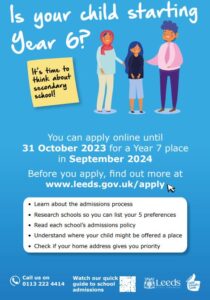This week’s Talk Time has a Reading and Oracy theme.
I can read an extract.
Year 1 and 2
Read the following extract using clear pronunciation and expression. You could take turns to read a line or a verse with someone else at home.
An extract from, The Lorax by Dr Seuss

At the far end of town
where the Grickle-grass grows
and the wind smells slow-and-sour when it blows
and no birds ever sing excepting old crows…
is the Street of the Lifted Lorax.
And deep in the Grickle-grass, some people say,
if you look deep enough you can still see, today,
where the Loraz once stood
just as long as it could
before somebody lifted the Lorax away.
What was the Lorax?
And why was it there?
And why was it lifted and taken somewhere
from the far end of town where the Grickle-grass grows?
The old Once-ler still lives here,
Ask him. He knows.
Key Stage 2
Read the following extract using clear pronunciation. As you read the extract aloud, think about the use of your facial expressions and eye contact too. Consider how and why they change throughout the text.
Year 3 and 4
An extract from Loidis, Ledes, Leeds by Tom Palmer
They had been at the Leeds City Museum for over an hour when Nishaa reached the Egyptian mummy in its glass case. She took one look, then turned away.
It was horrible.
Immediately Nishaa felt disappointed in herself. Disappointed because she loved the idea of being able stand next to things that were thousands of years old. Real things from ancient history. How cool was that? She’d read enough books about them to know how amazing these artefacts were.
But there was something about this mummy. Something dry and brown and rotten that made her feel sick at the same time as being fascinated. Too much like a dead body from centuries ago. Which is exactly what it was.
‘Shall we go and stand outside?’ Mo suggested, noticing Nishaa’s reaction.
‘Get some fresh air.’
‘Yeah,’ Nishaa agreed. Mo led the way. Nishaa and Jack followed. Jack was ready to go too.
They’d done the ancient history section – and the history of Leeds section. Both had been okay, but he’d had enough now. Mo took his two friends down a corridor and through some glass doors. Then another corridor, which was different to the others. It had bare walls. No colourful displays. Even so, Mo felt confident that this was the way out.
Until he saw that the way was blocked by a woman wearing an old-fashioned dress, long dark hair tucked neatly beneath a wide-brimmed hat. She was also wearing a purple ribbon across her coat. The corridor felt suddenly cold.
Mo shivered.
‘Hello,’ the woman said, addressing all three of them.
‘Er… hi,’ Mo said.
‘How are you enjoying the museum, children?’
‘Good thanks,’ Nishaa said.
‘Well, it’s not that good,’ Jack contradicted. He felt tired and grumpy now. He just wanted to be on the bus home.
‘Did you enjoy the gallery about Leeds and its history?’ the woman asked.
‘It was okay,’ Mo replied. ‘But we didn’t really stop for too long.’
‘That’s a shame,’ the woman said. ‘Don’t you want to know about the history of your city?’
‘Not really,’ Jack answered.
The woman said nothing. She just looked at the three children, one after the other.
None of them quite understood who she was, until Nishaa had a thought. Something she remembered from a London museum her dad had taken her to in the summer holidays.
Year 5 and 6
An extract from The Hobbit by J.R.R. Tolkien
In a hole in the ground there lived a hobbit. Not a nasty, dirty, wet hole, filled with the ends of worms and an oozy smell, nor yet a dry, bare, sandy hole with nothing in it to sit down on or to eat: it was a hobbit-hole, and that means comfort. It had a perfectly round door like a porthole, painted green, with a shiny yellow brass knob in the exact middle. The door opened on to a tube-shaped hall like a tunnel: a very comfortable tunnel without smoke, with panelled walls, and floors tiled and carpeted, provided with polished chairs, and lots and lots of pegs for hats and coats – the hobbit was fond of visitors. The tunnel wound on and on, going fairly but not quite straight into the side of the hill – The Hill, as all the people for many miles round called it – and many little round doors opened out of it, first on one side and then on another. No going upstairs for the hobbit: bedrooms, bathrooms, cellars, pantries (lots of these), wardrobes (he had whole rooms devoted to clothes), kitchens, dining-rooms, all were on the same floor, and indeed on the same passage. The best rooms were all on the left-hand side (going in), for these were the only ones to have windows, deep-set round windows looking over his garden and meadows beyond, sloping down to the river.
This hobbit was a very well-to-do hobbit, and his name was Baggins. The Bagginses had lived in the neighbourhood of The Hill for time out of mind, and people considered them very respectable, not only because most of them were rich, but also because they never had any adventures or did anything unexpected: you could tell what a Baggins would say on any question without the bother of asking him. This is a story of how a Baggins had an adventure, found himself doing and saying things altogether unexpected. He may have lost the neighbours’ respect, but he gained – well, you will see whether he gained anything in the end.

